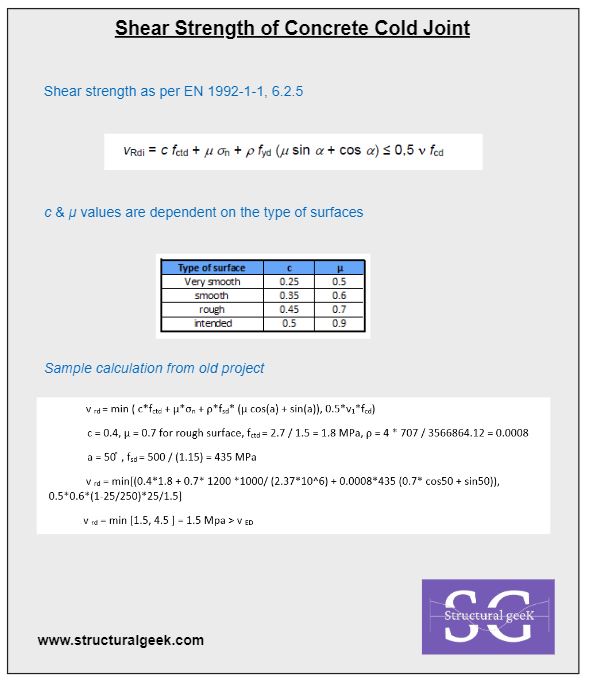As a structural engineer you are required to estimate the design shear strength of concrete cold joint.
[1] A concrete cold joint is the joint created due the discontinuity in concrete pouring or any other reason.
[2] The similar approach to compute the design strength of concrete joint is used for precast connections as well where precast elements are connected by means of cast in -place concrete.
[3] The design shear strength across the joint can be calculated as per clause 6.2.5 of EN 1992-1-1, which gives the shear capacity at the interface between the concrete casted at different times.
It states that shear capacity across the joint can be given as
v rd = min ( c*f ctd + μ*σ n + ρ*f sd (μ cos(a) + sin(a)), 0.5*v1*f cd)
[4] The c and μ values depend upon the type of interaction surface, as the code the surface can be of these four types.
– very smooth
– smooth
– rough (prepared or roughened surface)
– Intended (shear keys or any other profile)
[5] The shear capacity of the joint results from three factors
– tensile strength of the concrete at joint multiplied with cohesion factor
– friction resistance generated due to normal forces
– Shear resistance contribution of reinforcement in parallel & perpendicular direction

[6] Further the maximum shear capacity is limited to 0.5 times maximum permissible compressive stress in the concrete, hence 0.5*v1*f cd.
[7] Use of this method is commonplace while determining the capacity of precast connection or joint which are produced to different construction phases.
This is a small post on shear capacity of concrete cold joint, any comments or suggestions are welcomed.
Comments are closed